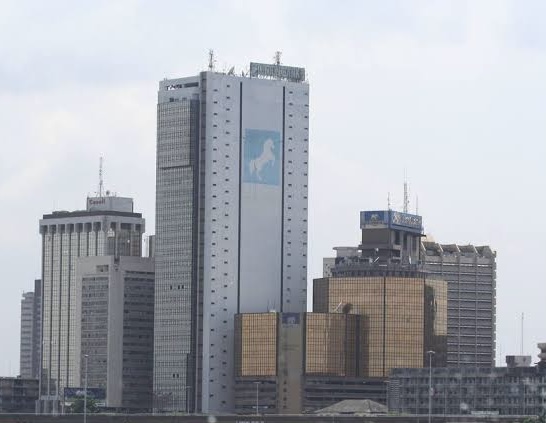
Nigeria’s health services sector is one of the country’s most labour-intensive industries, combining highly skilled clinical workforces with large volumes of support and administrative staff. From teaching hospitals to HMOs and diagnostics providers, employers face a constant balancing act between service delivery pressures, professional development needs, and the financial constraints of healthcare economics.
Unlike sectors where productivity can be decoupled from hours worked, health services demand sustained human presence—often under high-stress conditions. In this context, human resources practices are a key determinant of both patient outcomes and organisational resilience. While some providers have made visible strides in work culture and career development, others continue to grapple with structural gaps in reward systems, communication, and staff engagement.
Public employee reviews, though limited in number and sometimes skewed by role or location, provide a useful window into this diversity of experience. The table below summarises available Glassdoor and Indeed ratings for notable Nigerian health services employers as at 13 August 2025.
Summary of public review scores
| Segment | Company | Glassdoor overall ★ | Recommend to a friend | Reviews (approx.) | Notable notes from public pages |
| Private hospital | Lagoon Hospitals | 3.8/5 | 94% | ~36 | Positive outlook ~86%. |
| Private hospital | Reddington Hospital (Lekki) | 3.3/5 | 73% | ~19 | Mixed welfare notes in review snippets. |
| Private hospital | The EKO Hospital | 2.6/5 | 32% | ~15 | Comp & benefits ~2.0/5; WLB ~2.8/5; Culture ~3.7/5. |
| Private hospital | St. Nicholas Hospital | 3.7/5 | 77% | ~39 | WLB ~2.9/5; Culture ~3.8/5. |
| Private hospital | Evercare Hospital (Lagos) | 3.5/5 | 83% | ~48 | WLB ~3.4/5; Culture ~3.9/5. |
| Private hospital | Cedarcrest Hospitals | 3.3/5 | — | ~41 | Rating only shown on overview. |
| HMO | Hygeia HMO | 3.5/5 | 75% | ~35 | Comp & benefits ~2.9/5; WLB ~3.0/5. |
| HMO | Avon Healthcare (Avon HMO) | 3.9/5 | 83% | ~25 | Strong business-outlook % on page. |
| HMO | Reliance Health (Nigeria) | 3.5/5 | 78% (NG) | ~95 (NG) | Comp & benefits ~3.0/5 (NG). |
| HMO / insurance | AXA (Nigeria ops, incl. health) | 3.8/5 | — | ~108 | Group-level Nigeria rating (not health-only). |
| Diagnostics | SYNLAB (global page) | 3.3/5 | — | ~183 (global) | Good learning; comms/pay vary by role/site. |
| Diagnostics | Clina-Lancet (Cerba Lancet Nigeria) | — | — | ~10 | On-time pay; limited growth; strict penalties. |
| Public teaching hospital | LUTH | 3.4/5 | 68% | ~57 | Comp ~2.3/5; WLB ~3.4/5; culture ~2.1/5. |
| Public teaching hospital | LASUTH | — | 94% | — | Category scores shown only. |
| Public (federal) | Federal Medical Centre | 3.9/5 | 100% | ~35 | Overview page stats. |
| Public teaching hospital | UCH, Ibadan (Indeed) | — | — | 21 (Indeed) | Indeed overall 3.8/5; WLB 3.4; Pay 2.9; Job security 4.0. |
Sector-wide Analysis
A few patterns cut across Nigeria’s health services employers. Private hospitals show the widest spread in employee sentiment. At the high end, Lagoon Hospitals reports a 94% recommend rate and an overall 3.8/5, with many reviewers bullish on the business outlook; this combination of confidence and advocacy is rare in the sector. St. Nicholas (overall 3.7/5, 77% recommend) and Evercare (overall 3.5/5, 83% recommend) also post solid sentiment, though St. Nicholas’ category breakdown hints at work–life balance pressure (~2.9/5) versus stronger culture scores—suggesting environments where people believe in the mission yet still feel the strain of shifts and caseloads.
By contrast, The EKO Hospital sits at 2.6/5 with ~32% willing to recommend. Category data is revealing: compensation & benefits around 2.0/5 and work–life balance ~2.8/5, even though culture & values ~3.7/5. This mix—values alignment amid reward and scheduling pain points—often shows up in hospitals where legacy systems and financial constraints rub against modern workforce expectations. Reddington sits in the middle (overall ~3.3/5, 73% recommend), but review snippets call out welfare concerns—again emblematic of the balancing act between service intensity and staff experience.
Among HMOs, the picture is comparatively upbeat. Avon Healthcare leads with 3.9/5 and 83% recommend, followed by Hygeia HMO (3.5/5, 75% recommend) and Reliance Health (Nigeria) (3.5/5, 78%). The category scores matter: Hygeia’s compensation & benefits (~2.9/5) and Reliance’s (~3.0/5) suggest that while these firms often deliver clearer career narratives and modern, tech-driven cultures, pay competitiveness remains a debate—especially for claims, care-coordination, and frontline ops roles. Note that AXA (Nigeria) reflects broader insurance operations (not health-only), but its 3.8/5 indicates a relatively steady org baseline compared with many clinical employers.
In diagnostics, public data is thinner. SYNLAB’s global page sits around 3.3/5 with reviews that frequently trade off learning and professional exposure against communication gaps or pay expectations depending on function and location. Clina-Lancet (Cerba Lancet Nigeria) has only a handful of reviews but a consistent thread: salaries paid on time paired with limited growth and strict error penalties—a sign of process-tight labs where HR scaffolding hasn’t fully caught up with performance rigour.
The public teaching hospitals show what you’d expect in large, mission-driven systems. LUTH posts ~3.4/5 with ~68% willing to recommend; category fragments point to low compensation (~2.3/5) and uneven culture scores, but Indeed narratives emphasise learning, exam prep, and clinical exposure—the classic exchange of long hours for professional development. UCH Ibadan on Indeed shows an overall 3.8/5 with job security rated higher than pay, and Federal Medical Centre’s generic Glassdoor page reports 3.9/5 with a striking 100% recommend (albeit a small sample). LASUTH displays a 94% recommend figure on its page snippet. Together, these pages suggest strong training value, variable pay timeliness, and workload pressure that rises with patient volumes.
What This Implies for HR Leaders
- Reward vs. vocation – Even where clinicians feel proud of care quality and culture, compensation remains a friction point. Category scores at EKO, Hygeia, and LUTH make it explicit. Employers can ease tension with transparent pay bands, clear review/raise cycles, and role-specific allowances for nights, critical care, and infectious risk.
- Work–life balance is structural, not cosmetic – Lower WLB scores often correlate with shift unpredictability rather than sheer hours. Hospitals that publish rota certainty windows, enforce maximum consecutive nights, and offer time-off guarantees tend to see better sentiment even without large payroll moves. St. Nicholas’ WLB vs. culture split is a case in point.
- Career clarity beats slogans – HMOs commonly score well on recommend when staff see a ladder (e.g., care ops → provider relations → analytics). Clinical employers can mimic this with micro-credentials (theatre, dialysis, ICU, endoscopy) tied to increments and promotion windows. Reliance Health’s category breakdown shows how career opportunities scores track with structured growth.
- Manager capability is the fulcrum – Review narratives—positive and negative—cluster around line managers. Basic toolkits (fair process, feedback, conflict resolution, scheduling hygiene) plus quarterly pulse + action trackers can compress sentiment variance dramatically, especially in busy wards and claims teams.
- Diagnostics need “people process” to match lab process – The Cerba Lancet reviews mirror labs that are airtight on SOPs but thinner on development and recognition. A small investment in mentorship, error-coaching (not just penalty), and internal mobility often pays back in retention.
About the Author
Dr Olufemi Ogunlowo is the Publisher of Anchor News and the CEO of Strategic Outsourcing Limited, a leading provider of personnel and business process outsourcing services in Nigeria.











